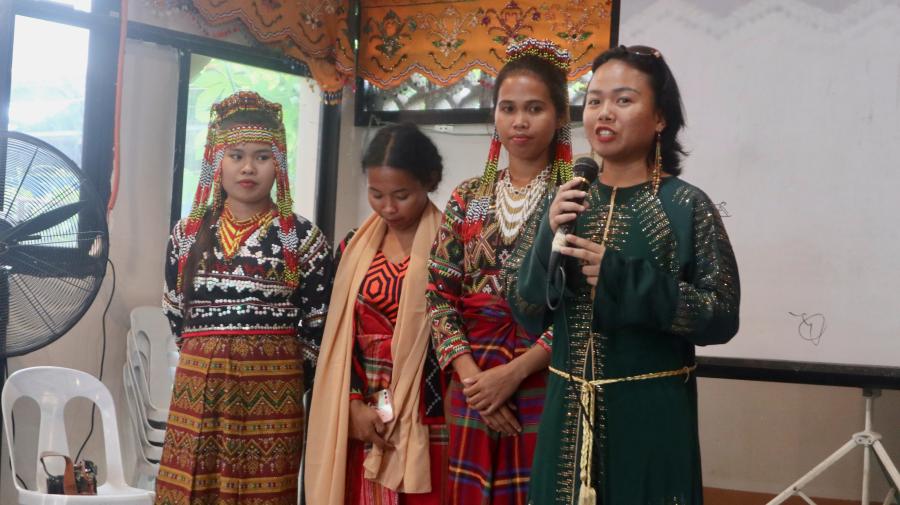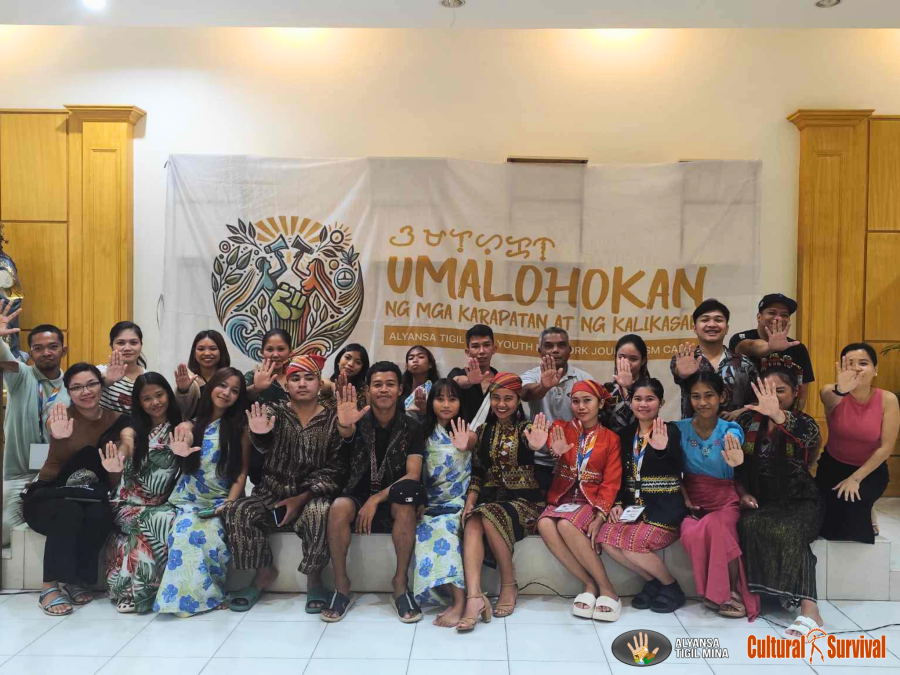I'm telling my daughter that she shouldn't get married yet, we have too many expenses and we need her help.
This statement, by the mother of a young woman working as a salesgirl in a provincial urban center of the Philippines, illustrates the family's dependence on their daughter's support. Like many other young people working in urban areas, this daughter regularly remits substantial amounts of money to her parents and siblings who live in a nearby rural town where her father grows rice on a small plot of leased land.
In the Philippines today, a deteriorating economic situation for rural households and a widening disparity in income distribution leads many, such as this young woman, to seek work in urban areas. On the Central Luzon Plain, the primary rice-producing area of the country, rice farmers typically are either tenant farmers or owners of small plots (two or three hectares) of land, and are for the most part unable to produce enough for their family's consumption for the year. Most sell a portion of the rice they produce in order to pay other expenses, and then, later in the year, must buy rice for their families. In addition, an increasing number of rural people have no access to land at all, either as tenants or owners, and must support themselves and their families by working as hired labor.
As a result of this economic situation, rural households often seek out diverse sources of income - farming alone, even for those with access to land as tenants or smallholders, is not sufficient to maintain the family. Other income sources may include wage labor in the rural area (including working on the farms of others) as well as migration to seek employment elsewhere. Migrants may include household heads who work elsewhere on a seasonal basis; for example, many construction workers in the capital city of Manila spend part of the year in rural villages outside Manila. Very commonly, however, rural families follow a strategy of encouraging one or more sons or daughters to move to an urban area on a more or less permanent basis, with the intention that they will, at least for a time, help to support family members remaining at home.
The 1973 National Demographic Survey in the Philippines showed that 35 percent of all Filipinos 15 years or older had moved at least once since birth. The largest proportion of those who go to urban areas move to the Manila metropolitan area, where the anticipation of finding some sort of employment is greatest. Other migrants move to smaller provincial cities. Migrants are found in a very wide variety of occupations, ranging from those requiring little education or skills - e.g., sellers of lottery tickets - to those requiring substantial amounts of education - e.g., government employees. In a sample of male migrants in Dagupan City, a provincial city in the northern part of the Central Luzon Plain, 11 percent worked in professional occupations, 33 percent were in sales and service occupations, and 34 percent were classified as laborers.
Women in the Philippines often migrate to cities. In fact, there is some evidence that women tend to migrate more than men. The find jobs primarily in the urban service economy, working as salesgirls in shops, market vendors, domestic servants, and so on.
When individuals move to a city, they usually remain in contact with family members still in the rural home, and to a considerable extent, continue to see themselves as members of the household in the rural area, even though they are not physically resident there. Young women living and working in Dagupan speak of the family home in the barrio (village) as "home" and refer to their current residence simply as the place where they stay when in the city. Of 176 migrants studied in Dagupan, only seven were neither visiting nor sending something to family members elsewhere. Nearly half visit home at least once a month, and many also receive visits from home.
As a result of these ties, there are extensive and continuing flows of people, goods, and money between rural-based and urban-based family members. When migrants visit home, they usually bring pasalubong, or small gifts, including food delicacies and other products not easily available in the barrio. Many also bring more substantial contributions of money or material goods needed by the family. These include food, clothing, and monetary remittances. Of those studied in Dagupan, nearly 50 percent were sending money home, in amounts ranging from less than fifty pesos a year to more than 5,000 pesos. At the same time, many migrants also receive some goods, such as rice or fruit, from the family farm.
In some cases, the family at home depends heavily on remittances sent by members working in the city. For example, a fourteen-year-old girl working as a housemaid and babysitter was earning 60 pesos a month in 1978-79. (At that time, 60 pesos was less than $10.) Every month, either her mother or father would come to Dagupan to see her and to get 25 pesos, or nearly half her wages. That 25 pesos constituted about one fourth the total family income for the month. The rest of their income derived from her mother's work as a laundry woman; her father was not working, and her older sister earned a very small amount of money as an assistant in a market stall in the family's hometown. Although they lived in a rural town, they had no land. and hence had to buy all their food. Most of their income was spent on rice, the basic food. In addition, the daughter's wages were used to pay for any emergency or unexpected expenses, such as house repairs and medical care.
In other cases, remittances are used for investment in education and in agricultural production. A young woman in her early twenties working as a salesgirl was earning 60 pesos a week. With that money, she regularly paid her younger sister's college tuition and rent. Her father, a rice farmer, was able to provide essential food for the family, but when the daughter visited she brought canned goods and other food unavailable in the rural barrio. At Christmas time, when she got a bonus at work, she gave her mother P100 to purchase piglets that would be fattened and later sold. Her contribution therefore, while not as essential as that of the fourteen-year-old, made it possible for the family to live at a slightly higher standard than they would have otherwise and made it possible for her sister to receive an education.
Remittances of money and goods from those who have moved to cities and those remaining in the rural areas are rooted in Filipino culture values stressing reciprocal relationships and obligation of one family member to others. The young woman helping to pay her sister's college education stressed this obligation: "If your parents have helped you, then it is your obligation to help others in the family, especially if you don't have a family of your own yet." Such exchanges help to maintain rural-urban ties over time and distance. Migration is not simply the move of an individual from one place to another, but rather the beginning of a process involving continued mobility and contact among people in different places.
Individuals move back and forth with ease, changing appropriate behavior, and even language, as the context changes. The young saleswoman, for example, speaks one language at home and another in her boarding house in the city, and in addition uses Tagalog and English at work; she changes from dresses and high-heeled shoes at work to pants and sandals when she visits the barrio. She, like other migrants, does not make sharp distinctions between "rural" and "urban" places, but rather sees both the city and the barrio as places providing a range of possibilities for work. If she can get a job in the barrio, she may go back, as there are many things she prefers about life there. But, given the scarcity of jobs in the rural areas, it is more likely that she will continue to work in the city while maintaining ties with family members at home.
Migration can be viewed as part of a family or household strategy. In an economic situation where families do not have sufficient income for their maintenance, movement of some family members to urban areas is one way to obtain additional resources. In some cases, such as that of the family of the young girl working as a domestic servant, it may be a strategy for maintaining the family at a bare subsistence level through the remittances of one or two family members working elsewhere. In other cases, it may be part of a strategy for some degree of upward mobility; by providing for her sister's education, the daughter working as a salesgirl is helping an overall family goal which has already enabled one daughter to become a school teacher.
Such strategies lead to the formation and maintenance of complex networks of relationships among those living in rural areas and those living in urban areas, involving considerable mobility back and forth of people, goods, and information. Rather than viewing "rural" and "urban" as two very different sorts of places, perhaps we, like the migrants involved in the process, should see these as parts of a single social field offering a range of opportunities and constraints. Individuals and families respond by changing place of residence and behavior as appropriate for their context. They do not necessarily become "urban" men or women but neither are they "peasants" somehow misplaced in the city; rather, they are to some degree both rural and urban at the same time.
Article copyright Cultural Survival, Inc.



